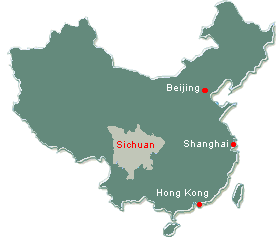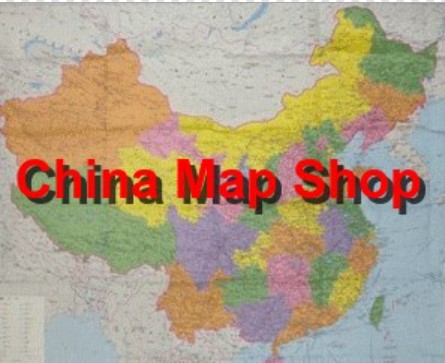|
|
|
Geography of Sichuan |
|
Sichuan
Province, short for Shu, is situated in the southwest
of China, embracing the eastern part of Qinghai-Tibet
Plateau and the Sichuan Basin. The province is 488,000
square km large with population 87.26 million (2007)
consisting of different nationalities such as Han, Yi, Zang
(Tibetan), Miao, Hui and Qiang. There are 32 cities, 3
minority nationality autonomous prefectures, 120 counties
in Sichuan Province. |
|
|
Climate of Sichuan |
Sichuan
Province has tremendous climatic difference resulting from
the physical variation. In the eastern basin it is
subtropical monsoon climate characterized by warm winter and
hot summer, early spring and rainy autumn. It is wet and
foggy and has little sunshine. The western part of Sichuan
provinces has temperate or subtropical plateau climate,
while the southern part of Sichuan shows marked variation in
climates in the mountains and canyons. Frost-free period in
the basin is 280-330 days per year, but on the plateau is
only less than 90 days. The average annual precipitation of
Sichuan province is 500-1200 mm, of which the basin has much
larger share than the plateau.
|
|
|
Brief History of Sichuan |
Sichuan
belong to the Kindoms of Ba and Shu. After the first
emperor of the Qin Dynasty unified China (221 B.C.), Shu and
Ba Prefectures were set up in Sichuan. In 1001 (during the
Song Dynasty) Sichuan was divided into four administrative
zones -- Yizhoulu (for
Chendu), Zizhoulu (for
Santai), Lizhoulu (for Guangyuan) and Kuizhoulu (for Fengjie).
These four Lu were called "four ravine lu" which is
the origin of Sichuan (Sichuan in Chinese means "four
ravines"). In the year of 1286 during the reign of Kublai
Khan, the first emperor of the Yuan Dynasty, Sichuan was
formally designated as a province.
|
|
|
Sichuan Local Products |
Rice is the
main gain crop of Sichuan and its output ranks first in
China. The principal cash crops are rapeseed, citrus fruit,
natural silk and tong oil. Sichuan produces more rapeseed
than any other province in the country. Sichuan's sugar
cane, ramie, camphor, varnish, wax trees, tea and bamboo
also have an important place in China's production. In the
western mountainous region, there are large virgin forests
of both conifer and broad leaf trees. Stock-breeding is wide
spread in the province. One the western plateau, the main
livestock is cattle, goat, sheep, Yak, Pianniu (hybrid
cattle of bull and female yak) and horse. In the basin, pig
rising is dominant. Hog bristle and casing of Sichuan
Province are China's traditional exports. The mountainous
region between the plateau and the basin has rich flora and
fauna owing to different natural environment. It is the home
of a good number of valuable birds and animals. Rare and
precious trees can also be found there. Nature reserves are
set up in many places.
|
|
|
Sichuan Local Cuisine |
Sichuan food
represents one of the four schools of cuisine in China. It
is sour, sweet, bitter, hot, spicy, aromatic and salty.
Anyone who tastes Sichuan food is deeply impressed by its
strong spicy and hot flavor. Chicken in chilly sauce and
fish in chilly bean sauce are the most typical hot dishes of
Sichuan. No wonder some foreign dub Sichuan food "Mexican
food in Chinese style". There is a great variety of Sichuan
food, but braised bear's paw in brown sauce, abalone with
dragon-well tea flavor, tea flavor duck and two crisp
delicacies are
the favority of foreign guests. In addition, chicken in
piquant
sauce, chicken wrapped in cellophane, shredded pork, Sichuan
style, hot and spicy bean curd and marinated white gourd,
etc, have a strong local flavor.
|
|
|
Places of Interest and Tourist Attractions: Sichuan |
|
Sichuna has many attractions
surrounding Chengdu and Jiuzhaigou, particularly famous for
Panda and Jiuzhaigou Valley. When people
travel to Sichuan,
the above two places can not be missed. Chengdu is the
capital city of Sichuan and can be arranged as the gateway
city when you plan
Sichuan tours.
As
the capital city, Chengdu is located in the hinterland of
Chengdu Plain, which is the largest plain in South Western
China. It is praised as the Land of Abundance. Chengdu is
also one of the first group of leading historical and
cultural cities with national renown and a key tourist city.
Your Chengdu tours
can not exclude Memorial Temple of Zhuge
Liang(Wuhou Temple), Research Center Base of Giant Panda
Breeding, Sanxingdui Museum, Kuanzhai Alley, ect.
Jiuzhaigou is also called Jiuzhaigou Natural Reserves. It is
famous for natural view in Jiuzhaigou Valley and Huanglong
Scenic Area. Besides, Jiuzhaigou is a national geopark
because of the geologial relics, calcified pools, flows and
waterfall as well as forests resorce.
Jiuzhaigou tours
are
often arranged around 3-5 days, including Jiuzhaigou valley,
Huanglong and surrouding places. Nowadays, more and more
foreign visitors are attracted to visit by the fairland-like
view in Jiuzhaigou.
For detailed attraction introduction, please read as below.
- Memorial
Temple of Zhuge Liang
Situated in the southern suburbs of Chengdu, this temple of
9.3 areas was built during the Western Jin Dynasty (A.D. 3rd
century) in memory of Zhuge Liang (181-234), the Prime
Minister of Kingdom of Shu and great scholar and strategist.
During the Ming Dynasty it was merged with the temple of Liu
Bei, the king of Shu Kingdom. The present temple buildings
were built in 1,672(Qing Dynasty). The impressive and
peaceful gardens represent the artistic style of the ancient
Chinese architecture. In the temple there are more than 40
statues of the Kingdom of Shu, some 40 steles and stone
tables, 30 plaques and a dozen or so of ancient tripods,
incense burners, bells and drums.
-
Huanglong Scenic Resort
-
Jiuzhaigou (Jiuzhaigou
Valleg)
|
|
|
|
|
|
|
|
Sichuan Useful Links and Sites |
|
|
|
|
Sichuan
Related Pictures and Videos |
|
|
|
|
Sichuan
Related Article and Report Links |
|
|
|
|
|
|
|
|



